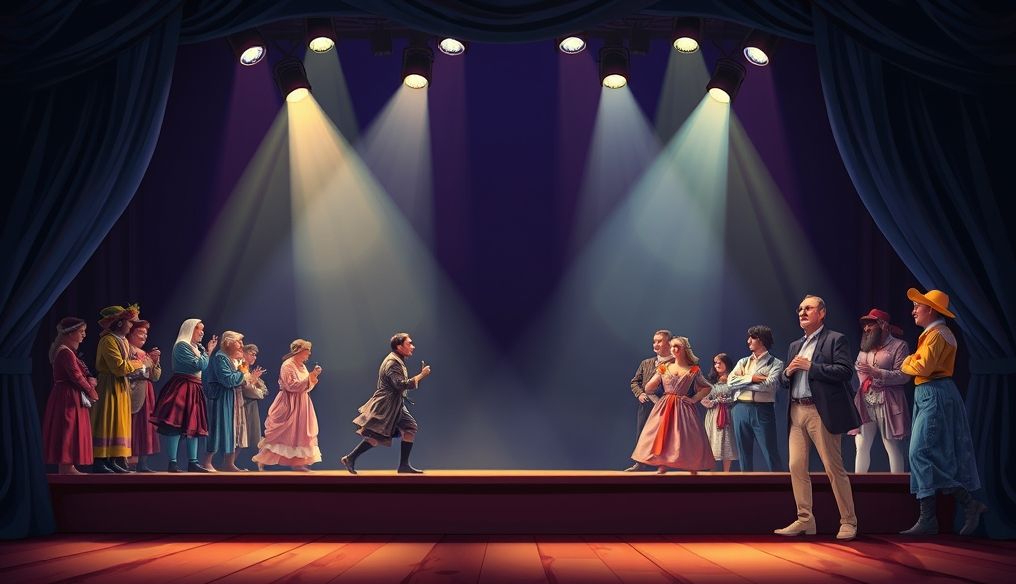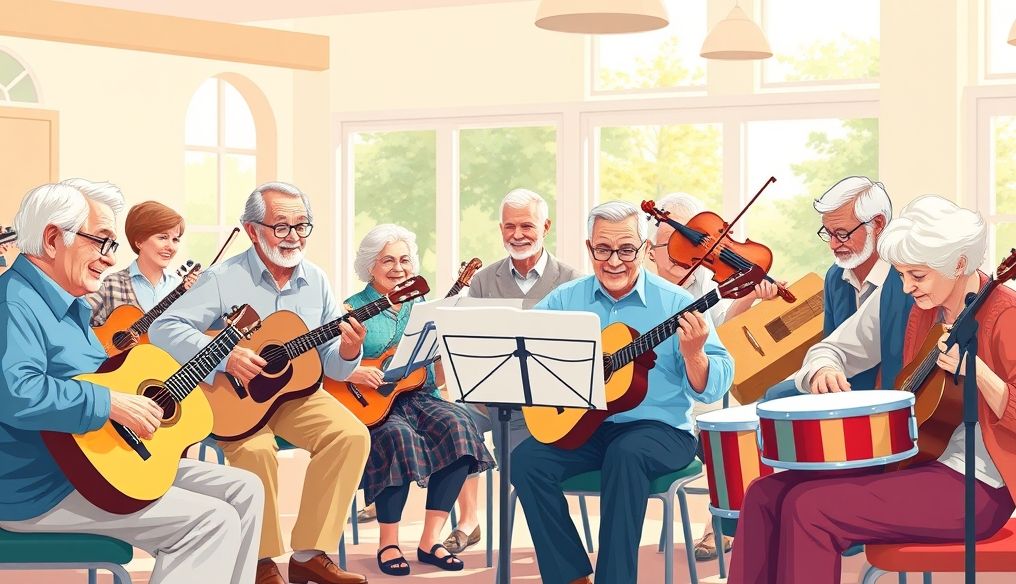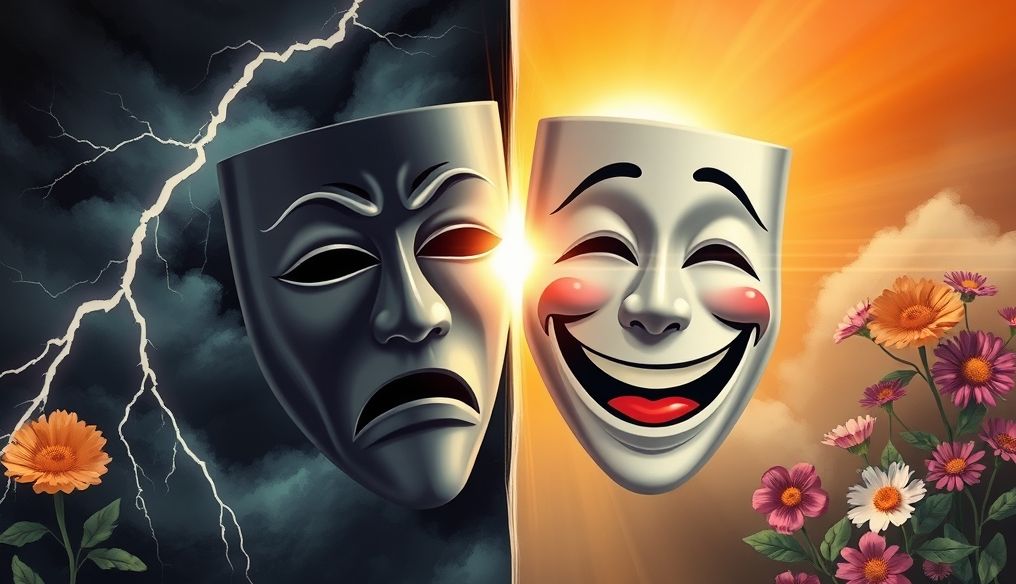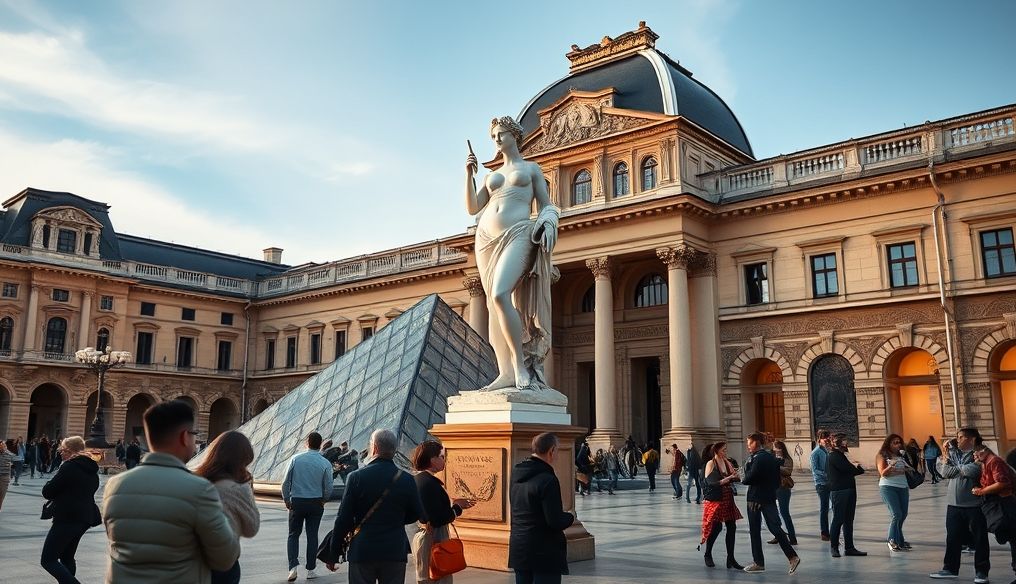What are the Different Types of Plays: Comedy, Tragedy, and Everything In Between?
Theater is the art of performance that combines literature and acting to present a story or idea to an audience. Over the ages, different types of plays have evolved, each characterized by its own style and goals. Among these types, comedy and tragedy stand out as the most common and influential. But are they the only two types? And what are the essential differences between them? This is what we will discuss in detail.
1. Tragedy: The Pinnacle of Human Drama
1.1. Definition of Tragedy
Tragedy is a type of play that deals with serious and tragic events facing the main characters. These characters are often nobles or prominent figures, and they face powerful conflicts that ultimately lead to their downfall or death.
1.2. Main Characteristics of Tragedy
- Seriousness and Tragedy: Tragedy deals with topics such as death, betrayal, revenge, and moral conflict.
- Noble Characters: The main characters are often prominent figures with high social status.
- Powerful Conflict: The main characters face strong internal and external conflicts that lead to their downfall.
- Tragic Ending: Tragedy usually ends with the death of the main character or their fall from grace.
- Catharsis: Tragedy aims to evoke feelings of fear and pity in the audience, leading to their purification from these emotions.
1.3. Examples of Tragedy
Some of the most famous examples of tragedy include:
- Oedipus Rex by Sophocles: The story of a king who discovers that he killed his father and married his mother.
- Hamlet by Shakespeare: The story of a prince seeking revenge for his father's murder.
- Romeo and Juliet by Shakespeare: The tragic love story between two young people from feuding families.
2. Comedy: A Satirical Mirror of Life
2.1. Definition of Comedy
Comedy is a type of play that aims to entertain and amuse the audience. Comedy often deals with funny or satirical situations and uses humor and irony to highlight the flaws of society or the behaviors of individuals.
2.2. Main Characteristics of Comedy
- Entertainment and Amusement: The primary goal of comedy is to entertain and amuse the audience.
- Funny Situations: Comedy relies on funny situations and ironic paradoxes.
- Comedic Characters: Comedic characters are often eccentric or have obvious flaws.
- Happy Ending: Comedy usually ends with a happy ending, where problems are solved and things return to normal.
- Satire and Social Criticism: Comedy uses satire and social criticism to highlight the flaws of society or the behaviors of individuals.
2.3. Types of Comedy
There are various types of comedy, including:
- Farce: Relies on exaggerated situations and funny physical movements.
- Romantic Comedy: Focuses on romantic relationships between characters and often involves funny situations and ironic paradoxes.
- Social Comedy: Criticizes the flaws of society and the behaviors of individuals through humor and satire.
- Sitcom: Relies on funny situations that recur in each episode.
2.4. Examples of Comedy
Some of the most famous examples of comedy include:
- A Midsummer Night's Dream by Shakespeare: A romantic comedy that deals with a complex love story between four lovers.
- Tartuffe by Molière: A social comedy that criticizes hypocrisy and pretense.
- The Importance of Being Earnest by Oscar Wilde: A satirical social comedy that criticizes Victorian society.
3. Other Types of Plays
In addition to comedy and tragedy, there are other types of plays, including:
3.1. Melodrama
Melodrama is a type of play characterized by excitement and exaggeration of emotions. Melodrama often deals with simple stories involving a conflict between good and evil and ends with a happy or tragic ending.
3.2. Drama
Drama is a type of play that deals with serious and impactful events facing the characters. Drama differs from tragedy in that it does not always end with a tragic ending and may include elements of comedy.
3.3. Historical Play
A historical play is a type of play that deals with real historical events or historical figures. A historical play often aims to educate the audience about history or shed light on contemporary issues through a historical perspective.
3.4. Experimental Play
An experimental play is a type of play that aims to challenge theatrical traditions and explore new methods of performance and directing. An experimental play often includes unconventional elements, such as the use of multimedia or interactive performance.
4. Black Comedy: When Laughter Meets Tragedy
Black comedy is a subgenre of comedy that deals with painful or horrific topics in a humorous or satirical way. Black comedy is often used to highlight the absurdity of life or the hypocrisy of society and may be controversial or shocking.
5. Tragicomedy: A Blend of Tragedy and Comedy
Tragicomedy is a type of play that combines elements of tragedy and comedy. Tragicomedy often deals with serious topics but also includes funny situations or comedic characters. Tragicomedy may end with a happy or tragic ending, or it may end with an open ending that leaves the audience wondering about the fate of the characters.
6. The Importance of Understanding Types of Plays
Understanding the different types of plays helps us to appreciate theatrical art better. It also helps us to choose plays that suit our tastes and interests. Whether you prefer laughter or tears, or you are looking for excitement or contemplation, there is sure to be a type of play that suits you.
7. Theater as a Mirror of Society
Theater is considered a mirror of society, reflecting its issues, concerns, and dreams. Through theater, we can understand ourselves and our society better. Whether it is a comedic or tragic play, it offers us a unique vision of life and humanity.
8. Theater in the Modern Age
Theater continues to play an important role in the modern age. Despite the emergence of other entertainment media, such as cinema and television, theater continues to attract audiences and provide a unique experience that cannot be replicated. Theater is constantly evolving, exploring new methods of performance and directing, and addressing contemporary issues that concern the audience.




